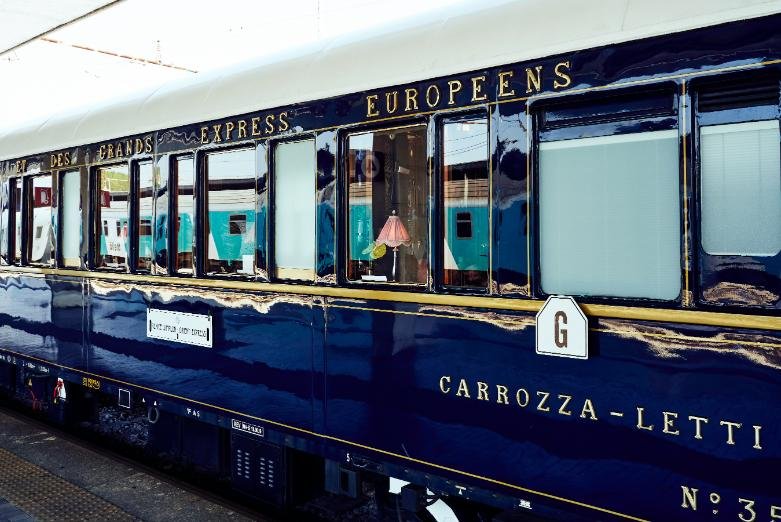With so many destinations and climates to explore, packing for Europe can feel overwhelming. Your luggage choices can make or break your trip, so it’s imperative to focus on versatility and efficiency. This Europe Travel Packing List helps you prioritize lightweight, multi-purpose items while avoiding overpacking. From weather-appropriate layers to must-have travel imperatives, you’ll learn how to streamline your belongings without sacrificing comfort. Whether you’re hopping between cities or hiking scenic trails, this guide ensures you’re prepared for unpredictable weather, tight baggage limits, and pickpocket risks—so you can focus on enjoying your adventure.
Key Takeaways:
- Pack versatile clothing to mix and match, making your Europe Travel Packing List more efficient for different occasions.
- Choose lightweight, compact luggage to navigate cobblestone streets and public transport with ease.
- Include a reusable water bottle and foldable tote to stay eco-friendly while exploring Europe.
- Opt for travel-sized toiletries to save space and comply with airline liquid restrictions.
- Bring comfortable walking shoes—your Europe Travel Packing List isn’t complete without them.
- Pack a universal adapter to keep your devices charged across different European countries.
- Roll clothes instead of folding to maximize space and minimize wrinkles in your luggage.
Understanding European Travel Essentials
The key to a stress-free trip lies in knowing what to pack for Europe.

Your Europe Travel Packing List should balance comfort, style, and practicality, as you’ll encounter diverse climates, cultures, and activities.
Focus on vitals like a universal adapter, comfortable shoes, and layers to adapt to changing weather. Avoid overpacking by choosing items that serve multiple purposes, ensuring you’re prepared without the bulk.
What makes packing for Europe different?
Packing for Europe isn’t like packing for a beach getaway or a single-destination trip. You’ll face varying weather conditions, cobblestone streets, and cultural dress codes, from chic cities to rustic villages.
Your Europe Travel Packing List must account for these nuances, prioritizing lightweight, versatile pieces that transition seamlessly from day to night.
How do seasonal variations affect your packing strategy?
About seasonal changes, Europe’s weather can shift dramatically—think icy winters in Scandinavia or scorching summers in the Mediterranean.

Your packing strategy should revolve around layering for colder months and breathable fabrics for heat.
Always check forecasts for your destinations, as surprises like sudden rain or unseasonable warmth are common.
Europe’s diverse climates mean you could experience all four seasons in a single trip, especially if crossing multiple countries.
Pack a compact umbrella and a lightweight jacket year-round, and adjust your Europe Travel Packing List based on regional trends—like warmer layers for alpine regions or sun protection for southern coasts.
Why is versatility key for European travel?
Below all else, versatility ensures you’re ready for anything Europe throws your way.
Choose neutral-colored clothing that mixes and matches easily, and opt for shoes that handle both city strolls and countryside hikes.
A scarf or shawl can double as a blanket or cover-up for religious sites, maximizing your options with minimal items.
It saves space and reduces stress when your wardrobe adapts to different settings. Multi-functional items, like a crossbody bag with anti-theft features, keep you safe and stylish.
By focusing on versatility, your Europe Travel Packing List becomes a tool for seamless exploration, letting you enjoy every moment without lugging unnecessary baggage.
Essential Clothing Items for Europe
Clearly, packing the right clothing for your Europe trip ensures comfort and versatility. Focus on weather-appropriate layers, neutral colors, and lightweight fabrics.
A mix of tops, bottoms, and a jacket will cover most situations. For tips on minimizing bulk, check out How to Pack Light for Traveling. Stick to wrinkle-resistant materials and avoid overpacking—your back will thank you.
What base layers should you include?
Around two to three moisture-wicking base layers are ideal for your Europe Travel Packing List. Choose merino wool or synthetic blends for temperature regulation and odor resistance.
These layers work under sweaters or alone, making them imperative for unpredictable European weather.
How many outfits do you really need?
Outfits should be limited to five to seven mix-and-match options for a week-long trip. Stick to a color-coordinated wardrobe to maximize combinations.
Packing fewer clothes forces creativity and keeps your bag light.
In fact, most travelers overpack by 50%. You’ll likely rewear items, especially jeans and outerwear. Focus on versatility rather than quantity—your Europe Travel Packing List should prioritize function over fashion.
Which versatile pieces offer the most outfit combinations?
Pieces like a neutral blazer, black jeans, and a simple dress can be dressed up or down. Scarves and accessories add variety without bulk. These items are key to a streamlined Europe Travel Packing List.
Offer yourself flexibility by choosing items that transition seamlessly from day to night. A lightweight cardigan or convertible pants can save space while expanding your outfit options.
Investing in quality, multi-purpose pieces pays off in the long run.
Footwear: The Make-or-Break of European Travel

Your footwear can make or break your trip, so choosing wisely is key for your Europe Travel Packing List.
Europe’s mix of cobblestone streets, long walking days, and varied terrain demands shoes that balance comfort, support, and style.
Packing the right pair ensures you stay blister-free while exploring cities, countryside, or cultural sites. Prioritize versatility—your shoes should handle miles of walking by day and transition seamlessly to evening outings.
Why is comfortable footwear important for Europe’s cobblestone streets?
About uneven cobblestone streets, they’re charming but tough on your feet. Without proper support, you risk blisters, fatigue, or even injuries. Opt for shoes with cushioned soles and good grip to navigate these surfaces safely.
Your Europe Travel Packing List should include footwear that keeps you steady and pain-free, so you can focus on soaking in the sights.
What are the best all-purpose walking shoes for city exploration?
About finding the perfect pair, look for lightweight sneakers or walking shoes with arch support and breathable materials.
Brands like Ecco, Clarks, or Allbirds offer stylish options that blend comfort and durability. These shoes should handle long days of sightseeing while complementing your outfits.
Plus, consider water-resistant options for unpredictable weather. A slip-on style can save time at security checks, and a neutral color ensures versatility.
Your Europe Travel Packing List isn’t complete without a reliable pair that works for museums, cafes, and everything in between.
When should you pack dress shoes vs. casual options?
Around evening plans or upscale dining, a pair of sleek loafers or ballet flats can elevate your look. However, don’t sacrifice comfort—choose dress shoes with padded insoles if you’ll be walking after dinner.
For most trips, one versatile dress pair is enough.
At the same time, prioritize casual shoes for daytime adventures. If your itinerary leans toward hiking or countryside visits, sturdy sneakers or boots are non-negotiable. Balance your vacation with shoes that match your activities, ensuring you’re prepared for every occasion.
Electronics and Adapters: Staying Connected
Unlike packing clothes, your list of electronics requires extra attention. You’ll need the right adapters and voltage-compatible devices to stay connected. Europe uses Type C or F plugs, so a universal adapter is a smart choice.
Keep your phone, camera, and laptop charged, but avoid overpacking—stick to vitals. A lightweight power bank can save you when outlets are scarce.
Prioritize dual-voltage gadgets to prevent damage. With the right gear, you’ll navigate Europe’s tech landscape effortlessly.
Which adapters work across most European countries?
Above all, a Type C or F adapter will cover most of Europe, including France, Germany, and Italy. These two-pronged plugs fit seamlessly into sockets across the continent.
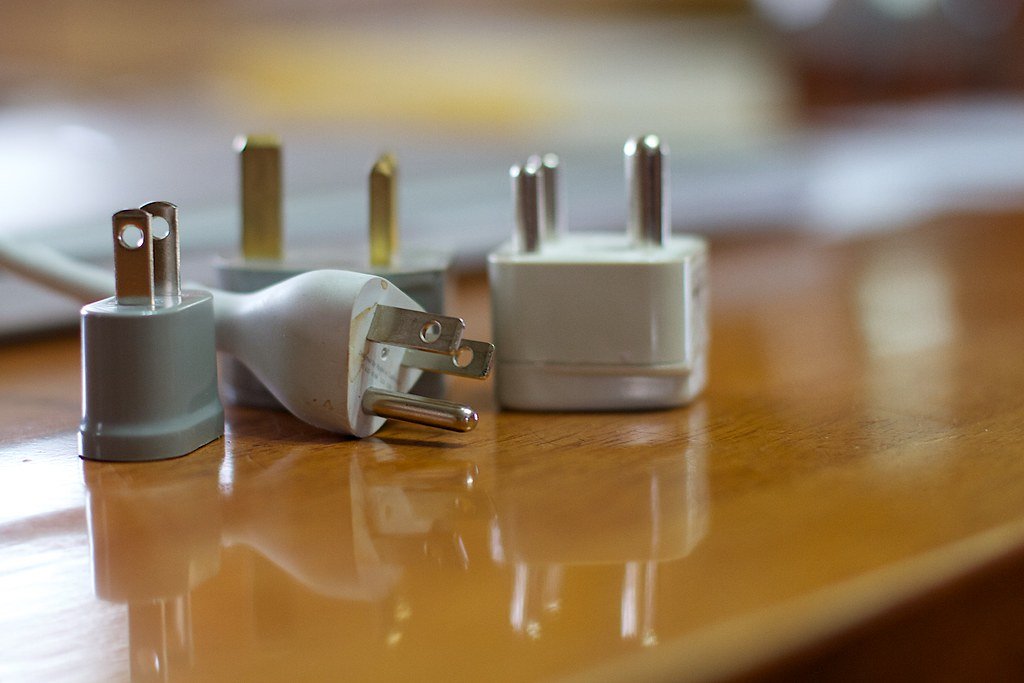
For versatility, invest in a universal adapter with USB ports—it’s a game-changer for charging multiple devices. Double-check your destination’s plug type, as the UK and Ireland use Type G. Packing the right adapter ensures you’re never left powerless on your Europe Travel Packing List journey.
What voltage considerations should you keep in mind?
Should your devices not support dual voltage, you risk damaging them. Europe operates on 220-240V, while some countries use 110V. Check your gadget’s label—if it says “100-240V,” you’re safe.
For hair tools or appliances without dual voltage, a converter is necessary, but they’re bulky and inefficient. Opt for travel-sized, dual-voltage alternatives instead.

Considerations like voltage differences can make or break your trip. Overlooking this detail might fry your devices or even cause a fire. Always verify your electronics’ compatibility before plugging them in.
If unsure, leave non-vital items at home. You have to prioritize safety and convenience, ensuring a smooth, connected experience abroad.
Is a portable charger vital for European travel?
Electronics like your phone and camera are lifelines abroad, and a portable charger ensures they never die mid-adventure. Europe’s bustling cities and remote villages don’t always offer easy access to outlets.
A compact power bank with fast charging saves you from low-battery panic. Include one in your List—it’s a small item with huge rewards.
Which portable charger should you pick? Aim for at least 10,000mAh to recharge your phone 2-3 times.
Avoid cheap, uncertified brands—they can overheat or fail safety standards. Look for TSA-approved options if flying. A reliable power bank is a lifesaver during long train rides or photo-heavy days. Don’t let a dead battery disrupt your plans.
Toiletries and Medications
Once again, packing smart for your travel means balancing imperatives with convenience. Bring travel-sized toiletries to save space, and consider a The Ultimate List and Guide to Packing Smart for Your 10- … for more tips.

Don’t forget prescription medications, a basic first-aid kit, and any over-the-counter remedies you rely on. Opt for solid toiletries like shampoo bars to avoid liquid restrictions. Always check airline rules to ensure compliance.
Which toiletries should you pack vs. buy locally?
Behind every efficient list is knowing what to bring and what to buy. Pack specialty items like your favorite sunscreen or contact solution, as these may be harder to find.
Basics like shampoo, soap, and toothpaste are easy to purchase locally, saving space in your luggage. Research your destination’s availability to avoid overpacking.
How can you meet liquid restrictions for carry-on luggage?
At the heart of stress-free travel is adhering to TSA liquid rules. Use 100ml (3.4oz) containers and store them in a clear, resealable bag.
Solid alternatives like deodorant bars or powder toothpaste help bypass restrictions. Always check your airline’s latest guidelines before flying.

But if you’re carrying liquids, organize them for quick security checks. Leak-proof bottles and silicone travel containers prevent spills.
Consider packing non-imperative liquids in checked baggage if possible. Staying compliant ensures a smoother airport experience.
What imperative medications and first-aid items should you always have?
What goes in your bags can make or break your trip. Carry prescription medications in their original containers, along with a doctor’s note if needed. Include basics like pain relievers, antihistamines, and band-aids.
A compact first-aid kit with antiseptic wipes and blister pads is a lifesaver.
Also, research local pharmacies at your destination, but don’t rely on them for urgent needs. If you have severe allergies, pack an epinephrine auto-injector and ensure it’s easily accessible. Being prepared keeps minor issues from derailing your adventure.
Weather-Specific Items
Many European destinations experience unpredictable weather, so packing smart ensures you stay comfortable.

Your packing should include versatile items like a compact umbrella, a lightweight waterproof jacket, and moisture-wicking layers.
Whether you’re exploring sunny Mediterranean coasts or chilly Nordic fjords, these importants adapt to your needs while saving space.
What rain gear is worth the space in your luggage?
Around Europe, sudden showers are common, so prioritize a packable rain jacket with a hood and quick-dry fabric.

A compact travel umbrella fits easily in your bag, while waterproof shoe covers or durable boots keep your feet dry. These items are worth their weight.
How should you prepare for unexpected temperature changes?
Unexpected shifts in weather demand flexibility. Here’s a quick guide:
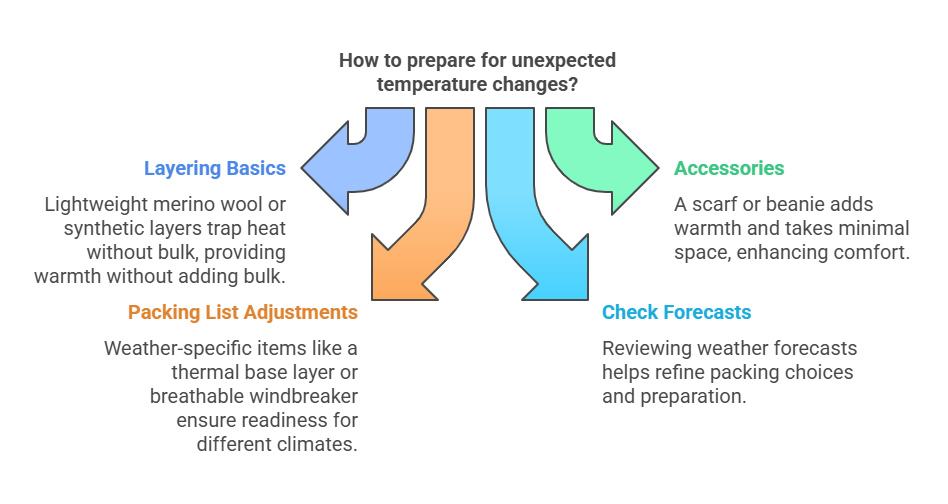
| Layering Basics | Lightweight merino wool or synthetic layers trap heat without bulk. |
| Accessories | A scarf or beanie adds warmth and takes minimal space. |
Weather-specific adjustments to your Packing List can make all the difference. For example, a thermal base layer is invaluable in alpine regions, while a breathable windbreaker suits coastal breezes.
Always check forecasts before departure to refine your choices.
Which layering strategies work best for variable European climates?
Variable conditions call for a smart layering system. Start with a moisture-wicking base, add an insulating mid-layer like a fleece, and top it with a weather-resistant shell.

This approach lets you adapt quickly, whether you’re hiking in the Alps or strolling through Parisian streets.
This method ensures you’re prepared for sudden cold snaps or unseasonable warmth.
Merino wool is ideal for odor control and temperature regulation, while synthetic materials dry faster.
Avoid overpacking—stick to versatile pieces that mix and match. You should should balance practicality and comfort for every climate.
Documents and Money Management
Despite the excitement of your Europe trip, keeping your documents and money secure is a top priority.

A well-organized suitcase ensures you have everything from passports to payment methods in order.
Losing these items can turn your adventure into a nightmare, so plan ahead to avoid stress.
What’s the best way to carry important travel documents?
To keep your travel documents safe, use a waterproof and RFID-blocking travel wallet. Store originals like your passport in a secure, hidden pouch, and carry photocopies or digital backups separately.
This way, you’re prepared even if the worst happens.
How should you organize your payment methods?
Your payment strategy should include a mix of cash, cards, and digital wallets. Carry a small amount of local currency for emergencies, and rely on a travel-friendly credit card with no foreign transaction fees.
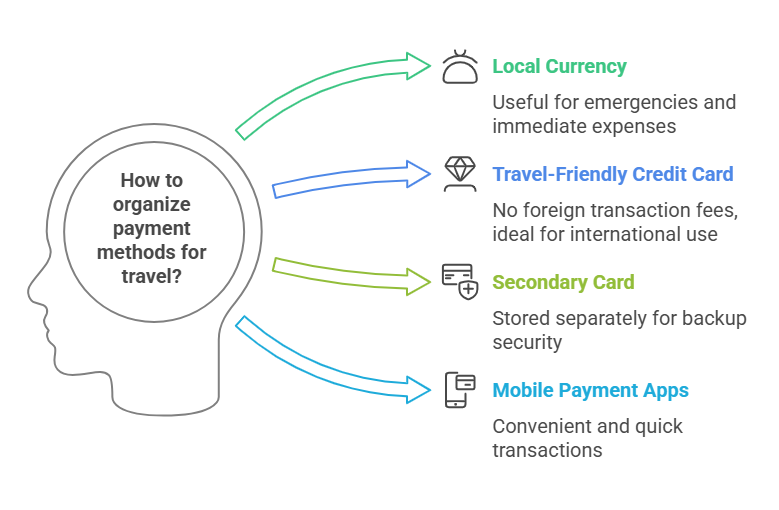
Avoid keeping all funds in one place to minimize risk.
Should you need backup, notify your bank of travel plans to prevent card freezes.
Consider a secondary card stored separately, and use mobile payment apps like Apple Pay or Google Wallet for convenience.
This approach balances accessibility and security on your travel.
Which apps and digital solutions simplify travel documentation?
About managing travel docs digitally, apps like Google Drive, Dropbox, or dedicated travel organizers store scanned copies of passports, visas, and itineraries.

These tools ensure you can access critical info even if physical copies are lost.
Methods like airline and hotel apps reduce paper clutter, while e-visa platforms streamline border checks.
However, always have offline backups in case of poor connectivity. Integrating these into your travel keeps you efficient and prepared.
Packing Strategy: Maximizing Space and Efficiency
For a stress-free trip, packing smart is key to your European Travel. Start by choosing versatile, lightweight clothing and organizing items by priority.

Use packing cubes to compartmentalize and keep your luggage tidy.
Limit shoes to two pairs—one for walking and one for dressier occasions. Roll bulky items and fold delicate ones to optimize space.
Always leave room for souvenirs, and weigh your bag before departure to avoid extra fees. A well-planned strategy ensures you have everything without overpacking.
How can rolling vs. folding impact your packing?
Below, you’ll find that rolling clothes saves more space than folding, especially for thicker fabrics like jeans or sweaters. It also reduces wrinkles and makes items easier to locate.
However, fold delicate garments like blouses or dresses to maintain their shape. Combining both methods in your packing ensures efficiency while protecting your belongings.
What packing techniques help you save space?
Above all, packing cubes are a game-changer for organizing and compressing clothing.
Use the bundle wrapping method to keep outfits together and minimize creases. Fill empty spaces, like shoes, with socks or small accessories.
Prioritize multi-purpose items, such as a scarf that doubles as a blanket. These techniques streamline your luggage and keep it lightweight.
Consequently, adopting these methods means you’ll carry less and stress less. Efficient packing not only saves space but also makes it easier to navigate airports, trains, and cobblestone streets. A well-organized bag aligns perfectly with your goals.
Are compression bags worth it for lightweight travelers?
Bags like compression sacks can be a lifesaver for bulky items like jackets or sweaters. They shrink volume by up to 50%, freeing up room for other crucials.

However, they add weight and may not suit ultra-light travelers. Consider them for winter trips but skip them in summer.
Hence, if you’re prioritizing space over weight, compression bags are ideal. Just be mindful of overpacking—compressed items can still exceed airline limits. Use them selectively to balance convenience and practicality.
Luggage Selection: Backpack or Rolling Suitcase?
After deciding on your List, choosing the right luggage is key.
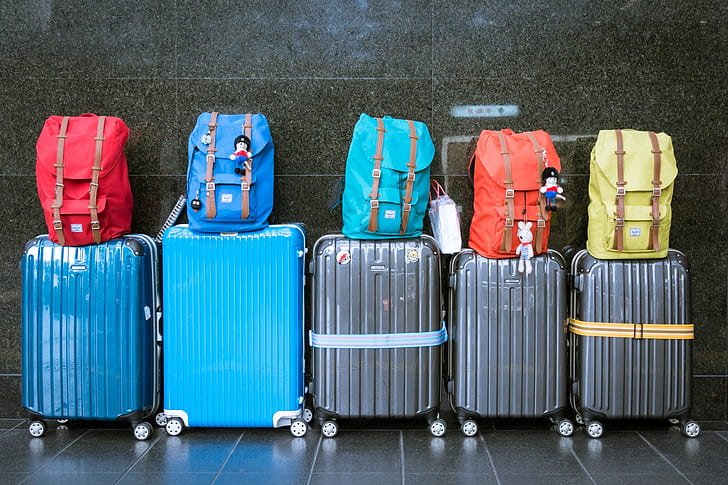
A backpack offers mobility for cobblestone streets and crowded trains, while a rolling suitcase provides ease for longer stays or smoother paths.
Your choice depends on itinerary, comfort, and personal preference.
What are the pros and cons of backpacks for European travel?
Suitcase or backpack? Here’s a quick breakdown:
| Pros | Cons |
| Easy to carry on stairs and uneven terrain | Limited space for bulky items |
| Hands-free movement in crowded areas | Can strain your back if overloaded |
| Ideal for multi-destination trips | Harder to organize than a suitcase |
| Fits in overhead bins easily | Less secure for valuables |
When does a rolling suitcase make more sense?
At longer stays or city-heavy itineraries, a rolling suitcase shines. If you’re staying in one place or traveling with more outfits, wheels save effort.
Smooth pavements and hotels with elevators make it a hassle-free choice.

Considering accessibility, a suitcase is better if you have mobility concerns or prefer effortless maneuvering in airports.
Just avoid cobblestone-heavy cities like Prague, where wheels become a liability.
How can packing cubes revolutionize your organization?
Suitcase chaos? Packing cubes sort clothes by category, maximizing space and keeping items wrinkle-free. They’re a game-changer for your vacation, especially if you switch accommodations often.
Sense the difference: cubes compress bulky items, prevent overpacking, and let you locate outfits instantly.
For backpacks, they maintain order, while in suitcases, they stack neatly. Waterproof options add extra protection for unexpected rain.
Minimalist Packing Strategies
To master packing light for your Europe trip, focus on versatile, mix-and-match clothing and limit shoes to two pairs. How to Pack Light for 2 Weeks in Europe | Suitcase Edition offers great tips for streamlining your packaging.
Prioritize quality over quantity, and use packing cubes to maximize space. A lightweight, carry-on-sized bag ensures mobility and saves time at airports and train stations.
Why is “less is more” vital for European travel?
On European adventures, you’ll navigate cobblestone streets, crowded metros, and small hotel rooms.

Overpacking slows you down, while a minimalist approach keeps you agile. Many cities have laundry options, so you don’t need outfits for every day. Stick to a capsule wardrobe to stay stylish and stress-free.
How can you implement the 5-4-3-2-1 packing rule?
More than a trend, this rule simplifies packing: 5 tops, 4 bottoms, 3 accessories, 2 shoes, and 1 outerwear. Choose neutral colors for easy mixing. Roll clothes to save space and reduce wrinkles. This method ensures you have enough without excess.
Also, layer strategically for changing weather. A lightweight jacket or scarf can adapt to chilly evenings. The 5-4-3-2-1 rule works for any trip length, making your Travel Packing efficient and practical.
How can you plan for laundry during your trip?
Below are ways to keep clothes fresh: book accommodations with laundry facilities or use local laundromats. Pack a travel-sized detergent for handwashing vitals in your sink. Quick-dry fabrics are ideal for frequent washing.
Your itinerary matters—plan laundry stops in cities with longer stays. Avoid overpacking “just in case” items. Re-wearing outfits is normal, especially with layers. A little planning ensures you travel light without sacrificing cleanliness.
Frequently Forgotten Items
Unlike the obvious necessarys like clothes and toiletries, smaller items often slip your mind when preparing your luggage.
These overlooked pieces can disrupt your trip, from missing adapters to no backup copies of important documents. A little extra attention ensures you’re fully prepared.
Which small necessarys are commonly overlooked?

Between packing your main items, it’s easy to forget travel-sized tissues, a reusable water bottle, or a portable phone charger.
These small but vital items keep you comfortable and connected, especially during long train rides or city explorations.
What safety items should you consider?
Consider adding a money belt, first-aid kit, and copies of your passport to your List. These items protect you from theft, minor injuries, and lost documents, ensuring peace of mind while abroad.
Also, a whistle or personal alarm can be lifesaving in emergencies. Store emergency contacts in your phone and carry a card with local emergency numbers—preparation is key to staying safe.
How can a checklist prevent packing mishaps?
Forgotten items often lead to stress, but a detailed checklist ensures nothing slips through the cracks. Cross-referencing your Ultimate Vacation Essentials before leaving minimizes last-minute panic and keeps your journey smooth.
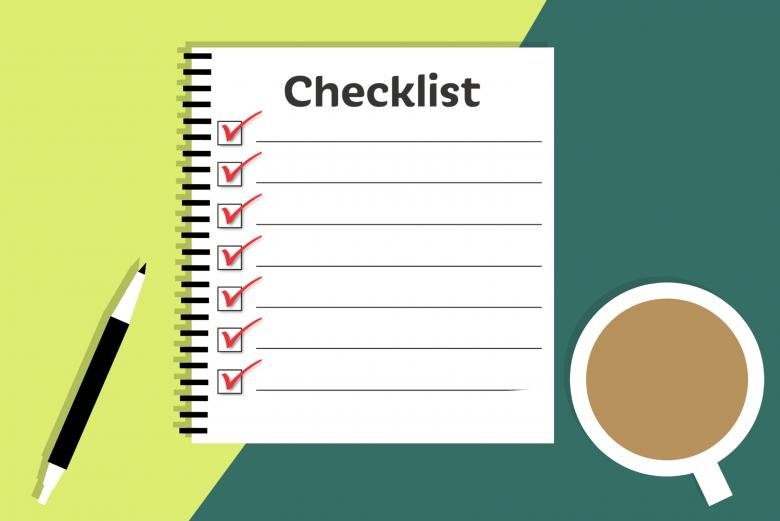
Another benefit? A checklist helps you avoid overpacking, saving space and weight. By reviewing it early, you’ll have time to adjust and prioritize what truly matters for your trip.
Cultural Considerations for Dressing in Europe
Now, when packing your Travel Wardrobe Checklist, it’s necessary to consider local dress codes. Europe’s diverse cultures mean clothing norms vary—what’s acceptable in one city might raise eyebrows in another.
Researching your destinations ensures you respect traditions while staying comfortable. For example, modest attire is often expected in religious sites, while stylish yet practical outfits work well in cosmopolitan areas.
Balancing versatility and cultural sensitivity will help you pack smart and travel light.
How do local customs influence what to wear?
For a seamless experience, align your wardrobe with local customs. In Southern Europe, lightweight fabrics and covered shoulders are common in churches, while Northern Europe favors layered, weather-appropriate styles. Observing locals helps you adapt quickly.
Your Essential Travel Gear should include versatile pieces that transition from day to night, ensuring you’re prepared for any setting.
What items might be inappropriate in certain countries?
Cultural norms dictate what’s acceptable—short shorts or revealing tops may be frowned upon in conservative areas like rural Spain or Italy.
Avoid sportswear as everyday attire in cities like Paris, where polished looks are preferred. Packing a scarf or shawl ensures you’re ready for unexpected dress codes.
At religious sites, shoulders and knees must often be covered, or you risk being denied entry. In Scandinavia, overly flashy outfits might stand out, while in Eastern Europe, neutral tones blend better.
Your Vacation Packing Essentials should prioritize modesty and adaptability.
How can you blend in with local fashion?
Above all, aim for understated elegance. Europeans often favor neutral colors, tailored fits, and quality fabrics. A well-fitted blazer or a classic trench coat can elevate your look instantly.
Avoid loud logos or overly casual wear to avoid standing out as a tourist.
In fact, accessorizing like a local—think scarves, leather bags, or minimalist jewelry—can make a big difference. Pay attention to footwear; stylish yet comfortable shoes are a staple in cities like Milan or Berlin.
With these tweaks, your Travel Essentials Checklist will help you navigate fashion norms effortlessly.
Environmental Impact and Responsible Packing

All travelers should consider the environmental footprint of their Sustainable Travel Kit.
By packing light and choosing sustainable items, you reduce waste, lower carbon emissions, and minimize harm to natural ecosystems.
Responsible packing isn’t just about convenience—it’s about preserving the destinations you love for future generations.
Why should you prioritize sustainable travel gear?
Sustainable travel gear helps you reduce plastic waste and lower your carbon footprint.
Items like reusable water bottles, solar-powered chargers, and biodegradable toiletries ensure your Eco-Friendly Travel Essentials align with sustainable values.
Investing in durable, ethically made products also saves money long-term while supporting responsible brands.
How can you reduce waste while traveling?
Sustainable habits like carrying a reusable shopping bag, refusing single-use plastics, and packing a collapsible container for leftovers can drastically cut your waste.

Opt for digital tickets and maps to minimize paper use, and always recycle or compost when possible.
Impact starts with small choices—every plastic bottle you refuse or reusable item you pack adds up. Over 8 million tons of plastic enter oceans yearly, and travelers contribute significantly.
By being mindful, you help protect Europe’s stunning landscapes and wildlife.
What eco-friendly alternatives can you consider for your trip?
Against traditional packing choices, swap disposable razors for safety razors, plastic toiletry bottles for solid bars, and synthetic fabrics for organic cotton or bamboo. These swaps are lighter, longer-lasting, and kinder to the planet.
Another smart addition to your Adventure Travel Gear is a portable water filter, eliminating the need for bottled water. Microplastics in cosmetics are a hidden danger—choose natural, plastic-free products to avoid contaminating waterways. Every eco-friendly choice makes your journey greener.
To Wrap Up
With this in mind, your Trip Essentials Checklist should prioritize versatility and efficiency. By focusing on lightweight, multi-purpose items and avoiding overpacking, you’ll navigate your journey with ease. Stick to imperatives like layers for changing weather, comfortable footwear, and compact toiletries to maximize space. Your list isn’t just about what to bring—it’s about smart choices that enhance your experience. With these tips, you’re ready to explore confidently, knowing your luggage is optimized for adventure. Happy travels!
FAQ
What should I include in my list for a two-week trip?
For a two-week trip, focus on versatile clothing, comfortable shoes, and travel-sized toiletries. Pack 5-7 tops, 3-4 bottoms, a lightweight jacket, and layers for changing weather. Include importants like a universal adapter, a compact umbrella, and a reusable water bottle to stay prepared.
How can I pack light while still having everything I need for my travel?
Choose mix-and-match outfits in neutral colors, wear your bulkiest items during travel, and use packing cubes to save space. Limit shoes to two pairs (one walking, one casual) and opt for multi-purpose items like a scarf that doubles as a blanket.
Are there any items I should avoid packing for Europe?
Skip heavy guidebooks, excessive electronics, and unnecessary gadgets. Avoid overpacking toiletries—most are available locally. Leave valuables at home to minimize risk, and check airline restrictions to avoid packing prohibited items.
What type of bag is best for a Europe Travel?
A carry-on-sized backpack or a lightweight rolling suitcase works well. Backpacks are ideal for cobblestone streets and trains, while suitcases offer easier organization. Choose one with multiple compartments for better accessibility during your trip.
How do I prepare for varying climates in Europe with my packing list?
Layering is key. Include a moisture-wicking base layer, a warm mid-layer like a fleece, and a waterproof outer shell. Pack a hat and gloves if visiting colder regions, and lightweight fabrics for warmer areas. Check weather forecasts before finalizing your preparation.
Should I bring a power adapter for my Travel?
Yes, a universal adapter is a must for charging devices in different countries. Europe uses Type C, E, or F plugs, depending on the destination. Bring one with multiple USB ports to charge several devices at once.
What documents should I include in my list?
Carry your passport, visa (if required), travel insurance, and copies of reservations. Have digital backups on your phone and a printed copy. Include a credit card with no foreign fees and some local currency for convenience.




